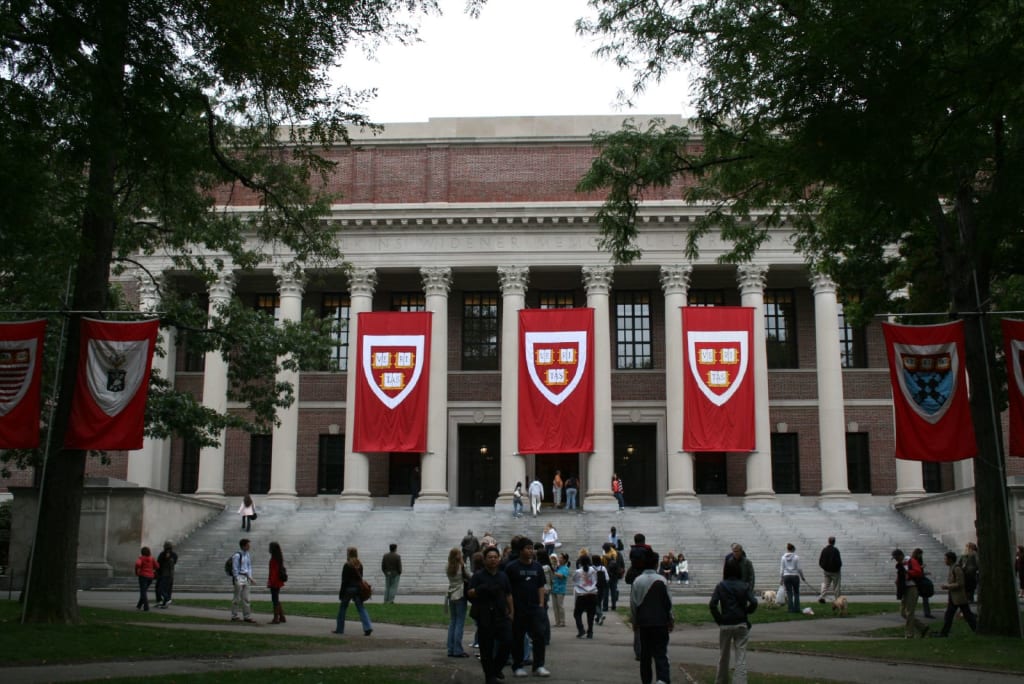Rejecting Students Doesn't Make a College Better
Why do we look up to colleges that close their doors to so many qualified kids?

What’s the best college in the country?
You’d probably answer this question with the name of a fancy college in the Ivy League, or an Ivy-equivalent like Stanford. Now — what makes these colleges good?
According to the narrative we have built around education in this country, the fact that Harvard, Yale, Princeton, and Stanford reject 95% of their applicants makes them “better” than other colleges that let in more students. America’s most prestigious colleges want nothing more than to appear selective — in fact, they often “recruit to deny” (soliciting more applications so they can reject more kids and move higher in the U.S. News rankings). Competitive students and their parents decide that the best thing is the thing that’s hardest to get — admission into a very selective college.
Because of the brutally competitive nature of these college admissions, the 18-year-olds who end up studying at these most prestigious universities are truly remarkable. I should know: I teach at a private high school that sends a lot of kids to the Ivy League. These students are more accomplished than anybody I knew when I was in high school. They’ve taken won national music competitions, had their writing published, and won state athletic championships.
These kids are going to do amazing things in the Ivy League. But, given who are, they’d probably do amazing things no matter what college they attend. Heck, they’d probably become impressive adults after spending four years in their parents’ basements with a library card and a wifi connection.
Sure, these students will learn from amazing professors and go on to have excellent careers. Some of that will come because of the excellent education they will no doubt receive at these prestigious schools. They’ll receive significant benefits from the signaling and networking effects of having a prestigious diploma with an elite name on it. But most of these kids’ future success will come from who they were before they got to college — driven, curious, and disciplined.

So which college is better? A Harvard or Yale that takes already-shiny students and polishes them a little more, or a college that educates students who aren’t already masters of the universe? A college that rejects everybody who isn’t guaranteed to succeed, or a college that takes students who need education, and educates them?
The connection between prestige and extreme selectivity is relatively new. A lot of people think that the most prestigious colleges have always been brutally selective, but that’s not really the case. In 1976, Yale accepted more than a quarter of its applicants. In 1995, that number was still 20%. By the early 2000s, the number had plummeted into single digits. Today, Yale accepts about 4.5% of applicants. Even this low number includes people who didn’t have to go through normal admission channels — admitted athletes, legacies, children of foreign potentates, etc. The admission rate for “regular” applicants is even lower.
Some of this is due to skyrocketing applications — over 46,000 this year at Yale — but it’s mostly because institutions like Yale have stopped growing with the country that they are supposed to serve. Take a look at the numbers from Yale since 1900:
Today, there are almost 330 million Americans — 50% more than there were in 1975. Had Yale kept growing at the same rate, we would expect 7,859 undergraduates there. How many undergraduates does this college, with all of its resources (an endowment of $31 billion!), teach today? 4,664! Five hundred fewer students than in 1975! And, since colleges like Yale make a lot of their money charging foreign students a pretty penny, the percentage of foreign students is growing.
Even accounting for a small decrease in attendance due to COVID, this is scandalous.
It’s not just Yale — most of the most “best” schools in the country have stopped growing. We don’t seem to be creating many new colleges, so that means that we’ve created an incredible educational bottleneck.
The amazing resources of these institutions are closed to those who could benefit from them the most. While a reasonably successful student (I’m thinking of a kid with an A average and good SAT scores, who was maybe a starter on the baseball team and wrote for the school paper) might have had a fair shot at going to an Ivy League college in the 1990s, now those spots are reserved for unbelievably accomplished students. Harvard rejects 25% of its applicants that have a perfect SAT score; Duke rejects MOST of the valedictorians who apply. Unless a kid has opened his own shelter for abused animals at age 16 while curing a disease, writing a novel, and getting straight A’s and perfect SATs, forget it.

The numbers above tell a shameful truth: prestigious American colleges have become more interested in protecting their own images as “elite” institutions than they are in performing a public service. If Harvard, Yale, Princeton, and Stanford were interested in making the country better (and, last time I checked, America has a few problems), they’d throw open their doors to far more students.
There’s an amazing opportunity here, both for these colleges and the country. These colleges could easily double or triple their student bodies without having to seriously relax their admissions standards. They could use the new tuition money (or maybe take a couple billion out of those swollen endowments that they never touch) to hire some more professors (there are plenty of well-qualified candidates out there) and build some more dorms. Think how many remarkable adults these colleges could turn out!
Perhaps this would take some of the gilding off of the image of these institutions; they wouldn’t seem as “elite” or “prestigious” anymore. But to me, that’s a good thing. America isn’t supposed to be a country that celebrates barriers to achievement and opportunity. Our elite colleges shouldn’t base their brands on how many people they reject. And we shouldn’t encourage our children to aspire to these institutions that don’t seem to be interested in actually accepting as many qualified applicants as possible.
We need to redefine what we mean when we talk about the “best” educational institutions — the best institutions are the ones that do the most good, not the ones that reject the most kids.
Originally published on Medium.
If you enjoyed reading this, please check out my history blog here or my other writing here. If you are able to do so, and you’re inclined, I would really appreciate it if you would support my writing by donating here.
About the Creator
George Dillard
History, Environment, and Politics, mostly in that order. Shorter stuff at worldhistoryfacts.com.






Comments
There are no comments for this story
Be the first to respond and start the conversation.